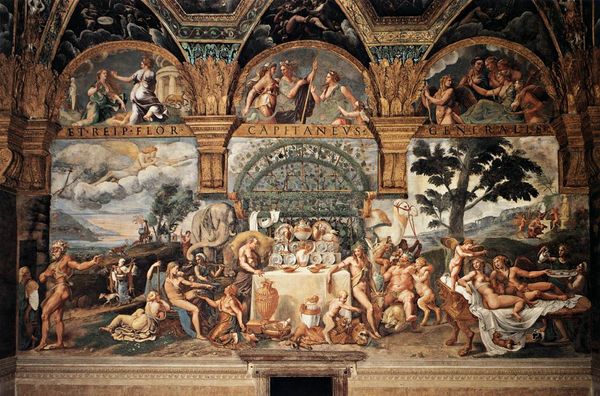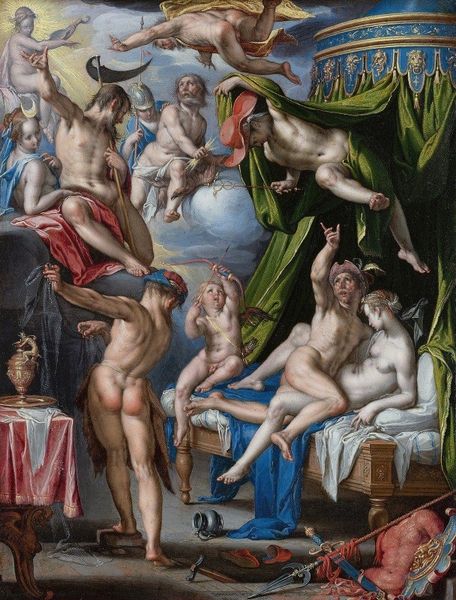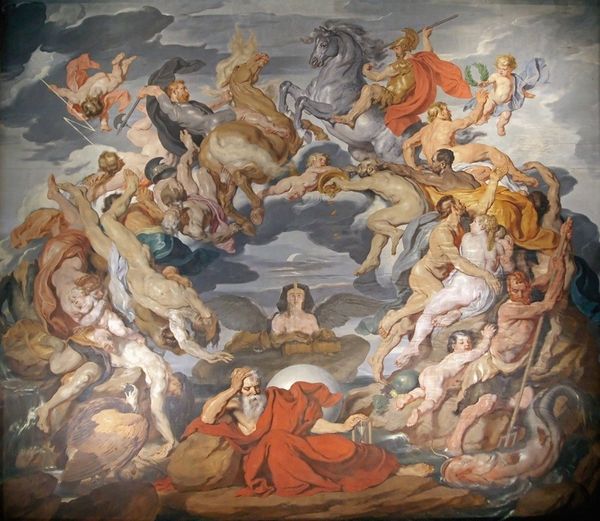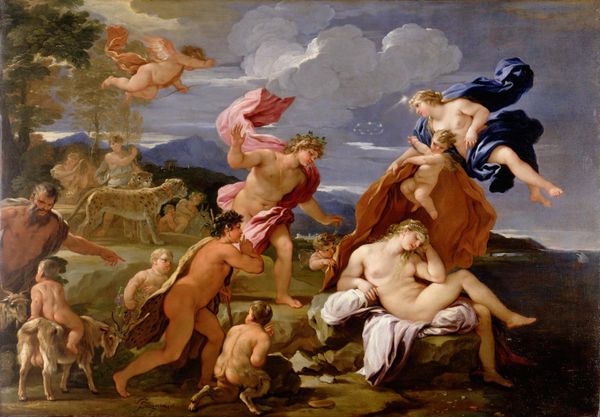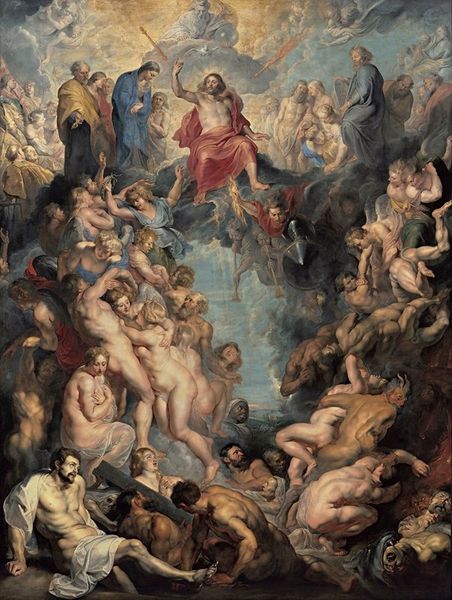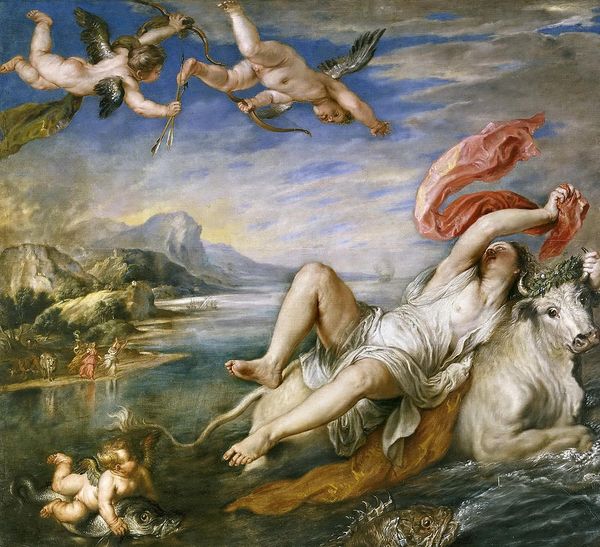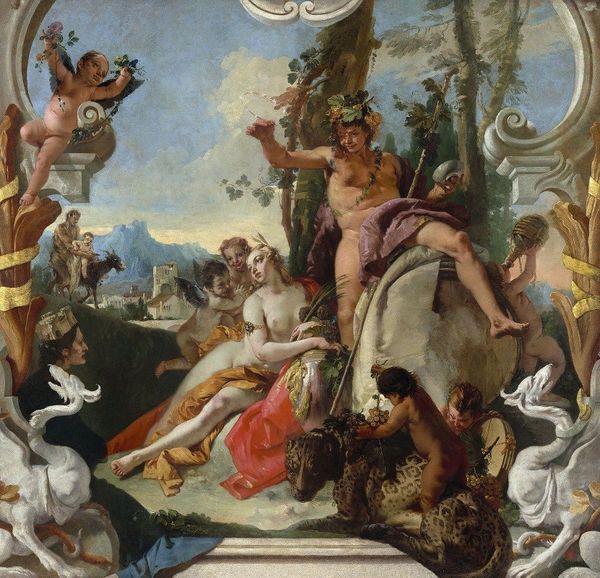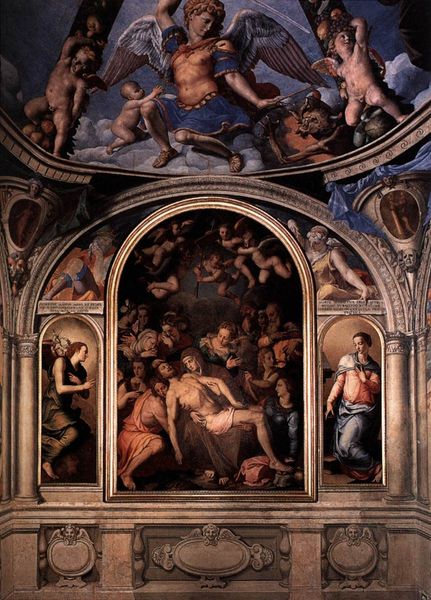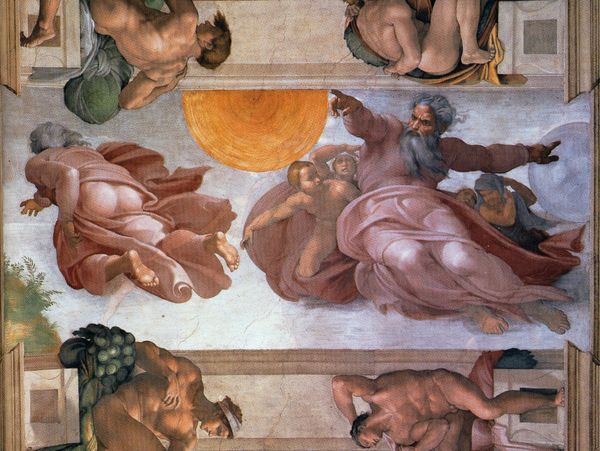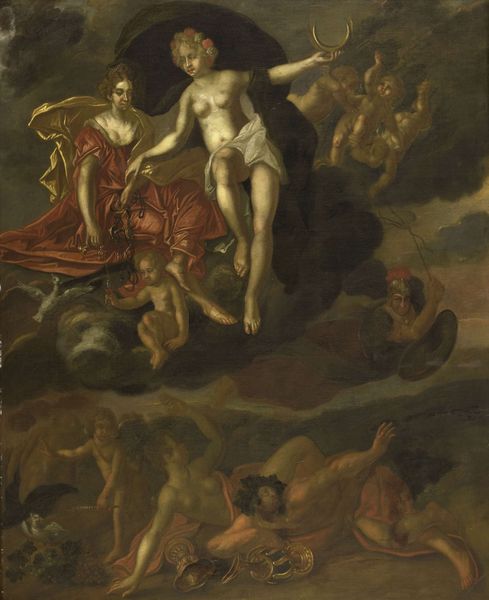
painting, oil-paint, fresco, mural
#
allegory
#
narrative-art
#
painting
#
oil-paint
#
sculpture
#
figuration
#
fresco
#
oil painting
#
romanticism
#
mythology
#
history-painting
#
italian-renaissance
#
mural
Copyright: Public domain
Joseph Anton Koch created this fresco, l’inferno di Dante, a tumultuous vision of hell. The composition, characterized by a dense arrangement of bodies, evokes a sense of claustrophobia and suffering. Koch uses a muted palette, dominated by somber grays and browns, to convey the bleakness and despair of the infernal realm. The writhing figures, rendered with anatomical precision, are caught in eternal torment. Koch’s representation draws heavily on Dante Alighieri’s literary descriptions, translating them into a visual language that is both unsettling and compelling. The painting invites us to reflect on the structural and symbolic elements that construct our understanding of moral and existential boundaries. The semiotic system of signs deployed here—demons, suffering souls, and fantastical beasts—creates a rich tableau of cultural and theological meaning. Ultimately, Koch challenges us to question the fixed meanings and categories through which we understand concepts of divine justice, sin, and redemption. The very density and layering of figures serves to destabilize established meanings, suggesting that hell is not a static place, but rather a dynamic, ever-shifting space of suffering and reinterpretation.
Comments
No comments
Be the first to comment and join the conversation on the ultimate creative platform.

